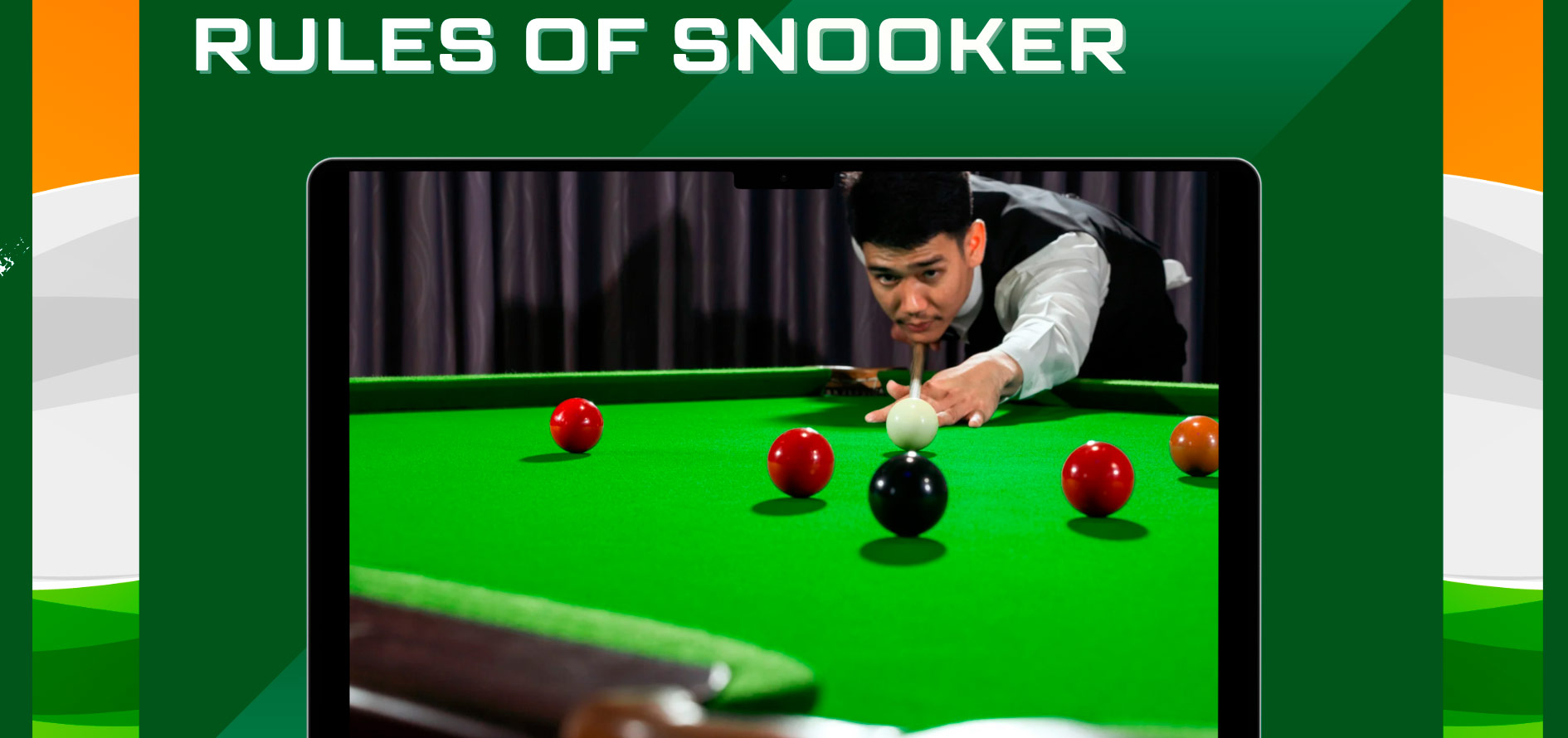Snooker is a sport that has captivated audiences for over a century with its blend of strategy, precision, and skill. Whether you are a casual viewer or a budding player, understanding the rules of snooker enhances your appreciation of this intricate game.
Is Snooker a Sport?
Yes, snooker is undeniably a sport. It requires physical skill, mental acuity, and strategic thinking. Players must demonstrate exceptional hand-eye coordination, focus, and a deep understanding of the game’s tactics to succeed.
Snooker Game History

The history of snooker dates back to the late 19th century. It originated in India, where British Army officers stationed there modified the game of billiards to create snooker. Over the years, it evolved and gained popularity, particularly in the United Kingdom. Today, it is a globally recognized sport with a rich heritage.
How to Play Snooker
To play snooker, players use a cue to strike the cue ball, aiming to pot other balls in a specific order. The game is played on a rectangular table covered with green cloth, known as baize, with six pockets. Here’s a step-by-step guide:
- Setup: The game begins with 15 red balls arranged in a triangle, a cue ball, and six colored balls (yellow, green, brown, blue, pink, and black) placed at specific spots on the table.
- Objective: The primary objective is to score more points than the opponent by potting the balls in the correct sequence.
- Sequence: Players must first pot a red ball, followed by any color ball. This alternation continues until all reds are potted. Then, players pot the colored balls in ascending order of their points.
- Winning: The player with the highest score at the end of the game wins.
What is the Difference Between Pool and Snooker?
While both snooker and pool are cue sports, they differ in several aspects:
- Table Size: Snooker tables are larger (12 feet by 6 feet) compared to pool tables (typically 9 feet by 4.5 feet).
- Balls: Snooker uses 22 balls, including the cue ball, while pool uses 16 balls.
- Rules: Snooker has more complex rules and scoring, making it a more strategic game compared to pool.
Object of Snooker
The objective of snooker is to score more points than your opponent by potting balls in a specific sequence. Here’s a breakdown:
- Points and Balls: In snooker, you score points by potting the balls into pockets on the table. There are 21 balls in total:
- 15 red balls (each worth 1 point)
- 6 colored balls (each with a different point value: yellow (2), green (3), brown (4), blue (5), pink (6), and black (7))
- 1 white cue ball (used to hit other balls)
- Sequence:
- You start by potting a red ball.
- After potting a red, you must pot a colored ball.
- Each time a red ball is potted, it is returned to the table until all reds are potted.
- After all reds are potted, you then pot the colored balls in the order of their value (yellow, green, brown, blue, pink, black).
- Scoring:
- Points are scored by potting the balls in the required sequence.
- A player continues their turn as long as they pot a ball.
- If a player fails to pot a ball or commits a foul, the turn ends and the opponent gets a chance.
- Winning: The player with the most points at the end of the match wins. If the score difference is significant, a player can win by default if their opponent cannot catch up.
Variant of Snooker
Several variants of snooker exist, each with unique rules. Some popular variants include:
- Six-Red Snooker: Uses only six red balls, making for a faster game.
- Power Snooker: Introduces timed frames and additional scoring rules.
Equipment Used in Snooker
- Cue: A long stick used to strike the cue ball.
- Chalk: Applied to the cue tip to increase friction.
- Table: Covered in green baize, with six pockets.
- Balls: Including one white cue ball, 15 red balls, and six colored balls.
Snooker Ball Points and Order
Each ball in snooker has a point value:
- Red: 1 point
- Yellow: 2 points
- Green: 3 points
- Brown: 4 points
- Blue: 5 points
- Pink: 6 points
- Black: 7 points
Snooker Scores
Players accumulate snooker scores by potting balls in the correct sequence, with the aim of achieving the highest total points by the end of the game.
Snooker Governing Body
The World Professional Billiards and Snooker Association (WPBSA) is the governing body for professional snooker. It oversees the rules, organizes major tournaments, and maintains player rankings.
Amateur Snooker Events
Amateur snooker events provide a platform for emerging talents to showcase their skills. These events are often organized at local, national, and international levels, serving as a stepping stone to professional status.
Most Prestigious Snooker Tournaments
The most prestigious snooker tournaments include:
- World Snooker Championship: Held annually at the Crucible Theatre in Sheffield.
- UK Championship: One of the sport’s Triple Crown events.
- The Masters: An invitational event featuring the world’s top 16 players.
Snooker Players Ranking
| Rank | Player | Country | Notable Achievements |
| 1 | Ronnie O’Sullivan | England | 6 World Championships, multiple ranking titles |
| 2 | Judd Trump | England | 1 World Championship, multiple ranking titles |
| 3 | Mark Selby | England | 4 World Championships, multiple ranking titles |
| 4 | Neil Robertson | Australia | 1 World Championship, multiple ranking titles |
| 5 | Kyren Wilson | England | Multiple ranking titles |
| 6 | Shaun Murphy | England | 1 World Championship, multiple ranking titles |
| 7 | John Higgins | Scotland | 4 World Championships, multiple ranking titles |
| 8 | Ding Junhui | China | Multiple ranking titles |
| 9 | Mark Williams | Wales | 3 World Championships, multiple ranking titles |
| 10 | Jack Lisowski | England | Multiple ranking titles |
Snooker players are ranked based on their performance in various tournaments, with the WPBSA maintaining the official rankings. Rankings determine qualifications and seedings for major events.
Professional Female Snooker Players
| Name | Country | Notable Achievements | Years Active |
| Reanne Evans | England | Multiple World Women’s Snooker Champion | 2000–present |
| Ng On-yee | Hong Kong | Multiple World Women’s Snooker Champion | 2010–present |
| Kelly Fisher | England | World Women’s Snooker Champion, multiple ranking titles | 2000–present |
| Sara Lagg | Sweden | Former European Women’s Snooker Champion | 2007–present |
| Maria Catalano | England | World Women’s Snooker Champion, multiple ranking titles | 2000–present |
| June Banks | England | Former World Women’s Snooker Champion | 1980s |
| Nina Dunning | England | Multiple European Women’s Snooker titles | 1990s |
| Aimee Radoja | Australia | Australian Women’s Snooker Champion | 2010s |
| Emma Cunningham | Ireland | Former World Women’s Snooker Champion | 2010s |
Professional female snooker players, such as Reanne Evans and Ng On-yee, have made significant strides in the sport, showcasing exceptional talent and competing in both women’s and mixed-gender events.
Who is Playing Snooker Today?
Today’s snooker scene is vibrant, with players like Ronnie O’Sullivan, Judd Trump, and Neil Robertson dominating the professional circuit. The sport continues to grow, attracting new fans and players worldwide.
Conclusion
Understanding the rules of snooker enhances the enjoyment of this intricate and strategic sport. Whether you’re watching a match or playing the game, the rich history, precise gameplay, and global appeal of snooker make it a fascinating sport to explore.

